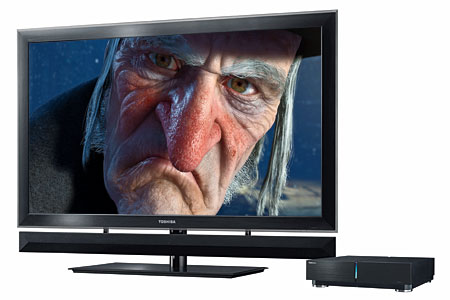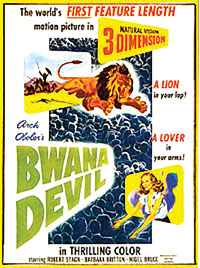3D: The Next Big Thing?
Remember the TV commercial that showed a Sony TV perched on the edge of the Grand Canyon? The set displayed an image of the canyon, and a family gathered around and eagerly watched… the TV.

While that family’s priorities may have been skewed, the ad’s irony was unmistakable. For better or worse, TV has become our window to the world. And that window is about to become even more transparent. HDTV is already here, but 3D HDTV is moving like a freight train toward a store near you.
CES Tells All
As I walked around the show floor at January’s Consumer Electronics Show (CES) in Las Vegas, it was hard to find a major company’s exhibit that didn’t feature 3D. It was everywhere. One or two HDTV manufacturers gamely tried to sell another story, but they soon heard the sound of crickets in their booths.
Panasonic, Sony, Samsung, LG, JVC, Toshiba, and Mitsubishi all drew big crowds, with 3D as their Holy Grail. And perhaps it will be. Last year was a bad year for the TV industry. Lots of TVs were sold, but margins (how much is made on each sale) were slim. Dealers were hurting, and when dealers squeal, manufacturers listen. Like all new and shiny products, 3D promises an upside to sales—at least until competition forces prices down again.

Those funky 3D glasses were everywhere at the show. All current 3D consumer formats require that the viewer wear some sort of 3D glasses. While techniques exist for 3D without glasses, they currently require a largely immobile head position. Practical, glasses-free 3D displays are still years away, and they will likely first appear in advertising signage.
3D requires new consumer hardware. With one major exception, Sony’s PlayStation 3, you’ll need a new Blu-ray player to watch the upcoming 3D Bluray Discs. You’ll also need a 3D-capable HDTV. No other players, and no current televisions except for some Mitsubishi RPTVs, can do 3D now, and they can’t be upgraded. It didn’t surprise me that nearly all of the manufacturers promised 3D products by mid-2010, including 3D HDTVs and 3D-capable Blu-ray players.
We expect native 3D program material to be sparse for the first year or so. Two major companies, Toshiba and Samsung, promise that their new 3D sets will convert conventional 2D content to 3D on the fly. But it remains to be seen how well this will work.
Only a few true 3D titles seem to be shoe-ins for an early release on 3D Blu-ray. All of them rely heavily on computer animation. The first two announced titles are Disney’s A Christmas Carol and Sony’s Cloudy with a Chance of Meatballs, both due later this year. The killer app for the format, of course, will be the eventual 3D release of Avatar. Personally, I’m holding out for Bwana Devil, but if you understand that reference, you’re either older than dirt or already a 3D junkie.
 The Way We Were
The Way We Were
3D for still images goes back more than 150 years. Sir Charles Wheatstone, an English inventor known for the Wheatstone bridge, a device for measuring resistance, invented stereoscopy in 1840. Stereoscopy uses two images that are slightly displaced from each other to duplicate what each eye sees. It presents them to the viewer in a way that directs one image to each eye.
Over the years, still-image stereoscopy was intermittently popular. It was most notable in the View-Master device that still exists as a children’s toy. There’s even a Website devoted to the topic (stereoscopy.com). In the past, consumers could buy stereoscopic cameras (one of them from View-Master), and you can still find them today, though they are mostly used. The only new one I found was the Horseman, which uses film and costs just under $5,000.
While there were a few experiments using 3D for movies in the early 20th century, the format’s first real explosion began in 1952. By 1951, television had cut film attendance in half, and the studios were desperate. Bwana Devil was the first 3D release, in 1952. Many followed. The best-known titles are Creature from the Black Lagoon, House of Wax, It Came From Outer Space,
Kiss Me Kate, and Dial M for Murder. The latter was reportedly shot in 3D, but it wasn’t released that way until limited revivals in 1980 and 1982. Incidentally, House of Wax was the first movie that was released in stereophonic sound, apart from Disney’s Fantasia (1940) and the special-venue Cinerama features. Only big-city audiences heard it that way in a few premium, first-run theaters.
Those early releases used two film reels (one for the image for each eye) and fed two projectors with polarized filters. The viewer wore special polarized glasses. Since movie reels only carried an hour’s worth of film at most, even short films had an intermission while the projectionist changed the reels. It must have been a nightmare to synchronize the two projectors. If one reel broke and had to be spliced, you would need to deliberately splice the other reel in exactly the same place! Reports of headaches and eyestrain came at least in part from uncorrected sync problems.
- Log in or register to post comments

















































